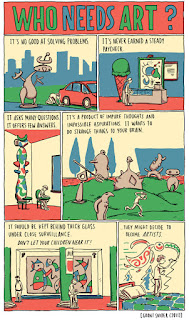Circle: is a simple shape, a closed plane curve. All points are the same distance from the center.
- You will be given a copy with some circles in it. Then, you will draw 10 extra circles wherever you want, and with different radius. It is important that these circles intersect each other.
- Next you will redraw all the circles in black ink (pen) with the help of the adapter and the compass
- To finish your composition you will have to decide wich parts of the circles go black or white, depending on the one next to it.
Examples:





















